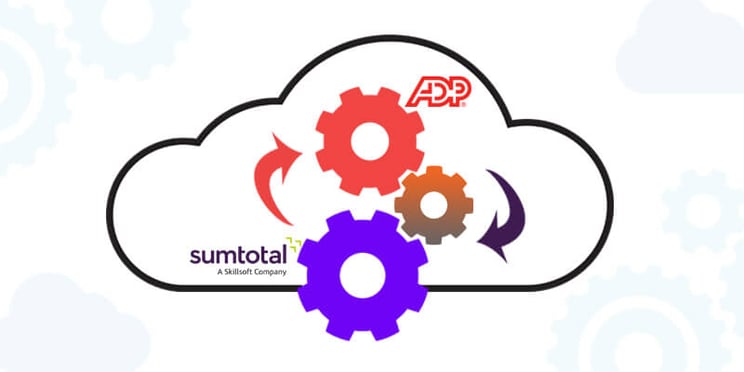
ADP is an important world provider in the HR technology market and the leading vendor in North America, Latin America, and Europe. Since many of ADP’s thousands of customers use human capital management applications from different vendors, ADP has developed a variety of tools designed to ease data integration. Their robust suite of application program interfaces (API) enables customers to automatically push data from ADP into many other enterprise applications and data centers.
The primary requirement for a SumTotal Learning integration with ADP is to get employee, organization, and job data from ADP HRIS or Payroll. The integration manages synchronization of employee records and creates employee records in SumTotal when the customer creates them in ADP.
Based on our experience working with clients on both platforms, integration is a multi-step process which involves in getting the required data with an ADP API or a custom report. In the early days of online applications, many ADP customers used a custom report, manually manipulated the data in a spreadsheet, then uploaded it to the target application. APIs have now become so commonplace almost all organizations use APIs to extract the data and prepare it for import using the SumTotal DSU process.
It is simple, but there are a few exceptions. The following list is a guide to handling those exceptions as a part of your implementation plan.
- In some cases, organizations will have different organization codes or job codes in ADP and SumTotal. Make sure to create accurate mapping between them for the API to create the file for SumTotal DSU.
- When clients create new jobs or departments in ADP, they need to be linked to the domain structure in the LMS. Administrators need to update and submit an organization and jobs file before processing the employee file into SumTotal.
- The ADP schema contains a both a file number and an employee number. In some cases, the file number and employee number are different. In most cases customers use file number as the unique employee identifier. We have found the best practice is to use the employee number as the unique identifier in SumTotal by appropriately mapping the two fields.
- There may be a difference in user status in the two applications. Since ADP is the organization’s system of record, make sure the API updates the status in SumTotal.
Some customers process a termination of employment and a rehire when an employee moves from one organizational unit to another, usually mandated by how the company’s financial system manages costing. ADP tries to send two records for the same employee, one with terminated status and other with an active status. The quick and easy solution is to build rules into the transformation so the process retains the active record and rejects the terminated record.
- There may be occasions to use additional business rules to data files, especially if you are using custom fields. The best place to handle the rules is in the data transformation in the API.
Consistent and stable integrations between your business platforms ease the burdens on your administrators, reduces errors, and helps to unify data for advanced analytics. That can have a significant impact on your business.
Pixentia is a full-service technology company dedicated to helping clients solve business problems, improve the capability of their people, and achieve better results.


